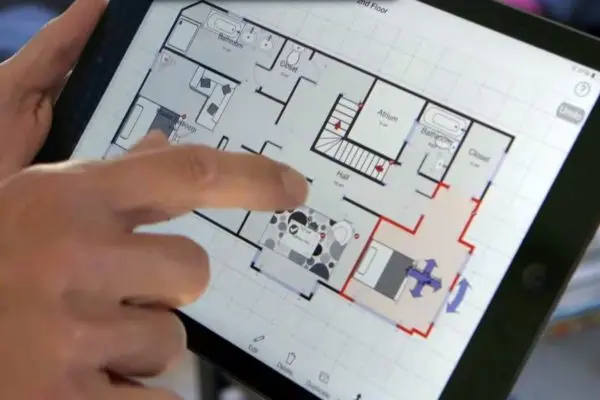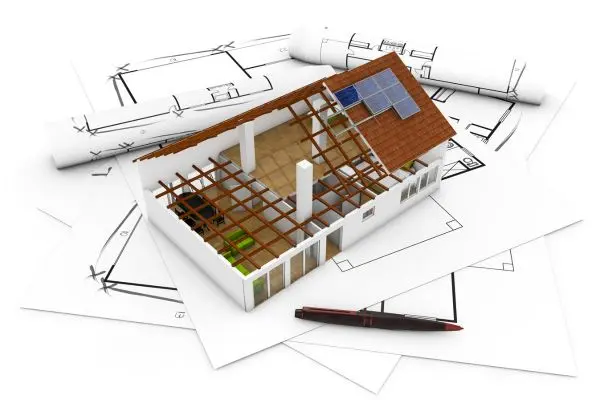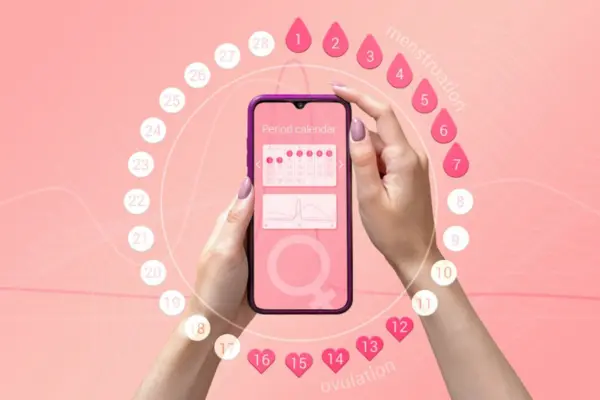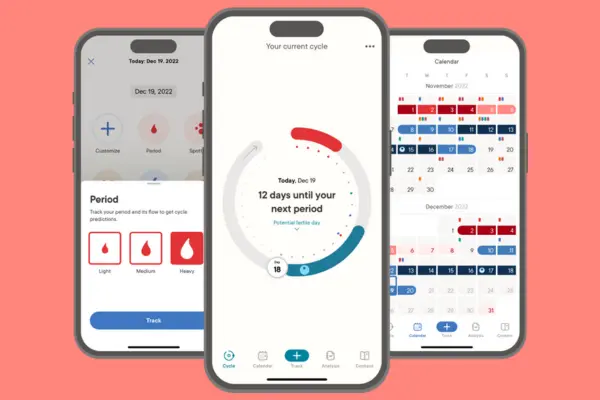Augmented Reality in Retail: Transforming the Customer Experience for Engaging Shopping
In today’s fast-paced shopping environment, retailers are always looking for new ways to attract and engage customers. Augmented reality (AR) is one of the most exciting tools available. This technology transforms the shopping experience by bringing digital information and visuals directly into the physical store, making the process interactive and enjoyable.
With AR, customers can try on clothes virtually, see how furniture fits in their homes, or even get personalized recommendations as they shop. This creates a more convenient and immersive experience that helps shoppers feel more connected to the products they are considering.
As the retail landscape evolves, embracing technologies like AR not only enhances customer interactions but also drives sales. By integrating AR into their strategies, retailers can create memorable experiences that keep customers coming back.
Understanding Augmented Reality
Augmented Reality (AR) combines the real world with digital elements. In retail, it creates interactive experiences that can transform how customers shop and engage with products. Here are two key aspects of AR in this context: its definition and its history in retail.
Defining Augmented Reality
Augmented Reality is a technology that overlays digital information on the real world. This can include images, sounds, and other data appearing on devices like smartphones or AR glasses. Unlike virtual reality, which immerses users in a fully digital environment, AR enhances real-life experiences.
Key Features of AR:
- Interaction: Users can engage with both digital and real elements.
- Real-Time Feedback: AR provides immediate responses to user actions, making interactions feel dynamic.
- Accessibility: Most AR experiences can be accessed through common devices like smartphones, making it widely available to consumers.
In retail, AR allows customers to visualize products in their own space or try them virtually before making a purchase. This leads to more informed buying decisions.
History of Augmented Reality in Retail
Augmented Reality began gaining attention in retail during the early 2010s. As smartphone technology improved, businesses started exploring AR’s potential to enhance customer experience.
Initially, companies like IKEA introduced AR apps that let users see how furniture would look in their homes. This innovation changed the shopping landscape, helping customers picture products in their own space.
Since then, many retailers have adopted AR for various purposes. Makeup brands offer virtual try-on options, while clothing stores allow customers to see how outfits look on a digital avatar.
Notable Milestones:
- 2012: IKEA launches its AR catalog app.
- 2016: L’Oréal introduces a virtual makeup try-on app.
- 2020: Numerous retailers adopt AR to enhance online shopping experiences during the pandemic.
This journey shows how AR has evolved into a vital tool for enhancing the retail experience.
Augmented Reality Technology
Augmented reality (AR) technology combines digital elements with the real world. It enhances shopping experiences by allowing customers to interact with products in new and exciting ways. Understanding the hardware and software behind AR is essential for retailers looking to implement it effectively.
Hardware Requirements
For AR to work properly, specific hardware is needed. Most smartphones and tablets can run AR applications, as they usually have cameras and sensors to capture the surroundings.
Key Hardware Components:
- Cameras: These capture the real world and help overlay digital content.
- Sensors: These detect motion and depth to create an accurate AR experience.
- Processors: Powerful processors ensure smooth and responsive interactions.
Retailers may also consider AR glasses or headsets for a more immersive experience. These devices can provide hands-free interactions, making it easier for customers to engage with products while shopping.
Software Capabilities
The software behind AR plays a vital role in how well it performs. Retailers need software that can easily overlay digital content onto the real world.
Important Software Features:
- Graphics Rendering: High-quality graphics make the AR experience visually appealing.
- Object Recognition: This feature helps the software identify products and place digital options accurately.
- User Interface Design: A clear and friendly interface enhances user engagement.
Many AR tools also allow retailers to customize content, ensuring a unique shopping experience that fits their brand.
AR Platforms for Retailers
Several platforms specialize in AR technology for retail. These platforms provide tools and resources to create effective AR experiences.
Popular AR Platforms:
- ARKit (Apple): This platform enables developers to create AR apps for iOS devices.
- ARCore (Google): Designed for Android, this platform allows for interaction with the environment.
- Unity and Vuforia: These platforms allow for cross-device AR experiences, making development easier.
Choosing the right platform depends on the target audience and the type of products being sold. Each platform offers features that cater to different needs of retailers, enhancing the overall shopping experience.
Benefits of Augmented Reality in Retail
Augmented reality (AR) offers several advantages for retail businesses. It not only boosts customer engagement but also allows for a more personalized shopping experience. These benefits help retailers stay competitive in a rapidly changing market.
Improving Customer Engagement
AR creates an interactive shopping environment. For example, customers can visualize products in their homes before purchasing. This capability reduces uncertainty and increases confidence in buying decisions.
AR also encourages customers to spend more time in stores or on apps. Engaging experiences, such as virtual try-ons, enhance enjoyment and keep shoppers interested. Retailers that use AR report higher customer satisfaction levels, which can lead to repeat visits.
Additionally, AR can share product information in a fun way. Through mobile devices, customers can access features like 3D views and videos. This blend of entertainment and information makes the shopping experience more enjoyable.
Personalizing the Shopping Experience
With AR, retailers can offer tailored experiences. For example, customers can receive customized recommendations based on their preferences. This personalization makes shopping feel more relevant to each individual.
AR also allows for unique in-store experiences. Interactive displays can adapt to user interactions, providing specific information or offers. This dynamic approach keeps customers engaged while making their shopping journey memorable.
Furthermore, AR can use data analytics to track customer behavior. By understanding what customers like, retailers can refine their marketing strategies. This data helps in creating more appealing promotions, making shoppers feel valued and special.
Real-World Applications
Augmented reality (AR) is transforming the retail landscape by enhancing customer experiences in various practical ways. This technology helps customers engage better with products and navigate stores efficiently.
Virtual Fitting Rooms
Virtual fitting rooms allow customers to try on clothes without physically changing. Shoppers can use AR mirrors or apps that overlay clothing on their images. This feature saves time and offers convenience.
Benefits include:
- Increased Satisfaction: Retailers report higher customer satisfaction because shoppers can see how items fit before purchasing.
- Reduced Returns: Fewer returns occur since customers are more confident in their choices.
Many popular fashion retailers have adopted this technology to stand out in a competitive market.
In-Store Navigation
AR technology also aids in in-store navigation. Customers can use their smartphones to find items or receive personalized recommendations as they walk through the store.
Essential features include:
- Interactive Store Maps: Shoppers can see a map on their devices that highlights the fastest route to their desired products.
- Promotions and Discounts: Customers receive notifications for deals as they approach specific sections.
This kind of technology enhances the shopping experience by making it easier to locate products and discover new ones.
Product Visualization
AR helps customers visualize products in their real-world context. For instance, furniture retailers offer apps that allow customers to see how a sofa would look in their living room.
Key aspects include:
- Real-Time Adjustments: Users can change colors or styles and see how different options fit their space.
- Enhanced Decision Making: This allows shoppers to make informed choices, reducing hesitation and increasing confidence in their purchases.
Such applications are valuable in categories like home goods and technology, improving the overall shopping experience.
Integrating AR with Retail Strategies
Augmented Reality (AR) offers exciting ways for retailers to engage customers. By blending AR with marketing and customer service, retailers can create experiences that attract and retain shoppers.
Marketing and Advertising
Incorporating AR into marketing can significantly boost customer interest. Retailers can use AR in advertisements to showcase products in engaging ways. For instance, customers can visualize how furniture looks in their home before buying.
Using interactive ads is another effective strategy. Customers can scan a code with their phones and access virtual try-ons or product demos. This approach is particularly useful in fashion, allowing shoppers to see how clothes fit without having to try them on physically.
List of Benefits:
- Increased Engagement: AR captures attention and holds it longer.
- Enhanced Understanding: Shoppers can see how a product works in real life.
- Improved Brand Recognition: Unique AR experiences help brands stand out.
Customer Service
AR can also transform customer service in retail settings. For example, AR apps can help customers find products by overlaying navigation instructions on their screens while shopping in-store. This feature enhances convenience and makes the shopping experience more enjoyable.
Additionally, retail staff can use AR tools to assist customers. They can provide detailed product information and recommendations by pointing their devices at items on the shelves.
Key Benefits:
- Instant Assistance: Customers receive help with minimal waiting time.
- Personalized Experience: Tailored suggestions based on customer preferences.
- Visual Guidance: Helps customers navigate stores and discover products easily.
Challenges and Considerations
Augmented reality (AR) in retail brings exciting possibilities, but it also has its challenges. Understanding these issues is essential for retailers to create effective AR experiences. User experience, technical limitations, and privacy concerns are critical factors to consider.
User Experience Challenges
Creating a smooth user experience with AR can be tough. Retailers need to make sure the technology is easy to use and pleasant for customers. If the AR tools are confusing or slow, shoppers may feel frustrated.
Key aspects include:
- Intuitive Design: Lay out the interface in a way that is clear and inviting.
- Loading Times: Ensure that images and models load quickly to keep shoppers engaged.
- Compatibility: Make sure AR applications work well across various devices and operating systems.
When these elements don’t meet expectations, customers might avoid using the AR features altogether.
Technical Limitations
AR technology relies on hardware like smartphones and tablets. Not everyone has the latest devices, which can limit access to AR experiences. This can lead to uneven customer experiences, where some enjoy advanced features, while others do not.
Considerations include:
- Device Performance: Older models may struggle with AR applications, making them slow or unresponsive.
- Internet Connection: A strong internet connection is crucial. Poor connectivity can disrupt the experience.
- Development Costs: Creating high-quality AR content requires skilled developers and can be expensive.
These factors can affect how effectively AR is used in retail.
Privacy Concerns
As AR collects user data, privacy becomes a big issue. Customers may be wary of how their information is used and shared. Retailers must address these concerns to build trust.
Key points include:
- Data Collection: Clearly explain what data is collected and how it will be used.
- Security Measures: Implement strong security protocols to protect user information.
- User Control: Allow customers to manage their privacy settings and data sharing preferences.
Addressing privacy concerns is essential for a positive customer experience with AR in retail.
Future of Augmented Reality in Retail
The future of augmented reality (AR) in retail shows promise with new trends and significant growth opportunities. As technology advances, retailers can create even more engaging experiences for shoppers.
Emerging Trends
Retailers are integrating AR with artificial intelligence (AI) to personalize shopping experiences. This combination allows for tailored recommendations based on customer preferences. For instance, AR can help a shopper visualize how a piece of furniture looks in their living room.
Another emerging trend is the rise of social shopping through AR. Platforms are developing features that let friends shop together virtually. Users can share their AR experiences in real-time, enhancing social interaction while shopping.
Finally, mobile AR applications are becoming more common. Customers can access AR features through their smartphones without needing special equipment. This accessibility encourages more brands to adopt AR, making shopping more interactive.
Potential Growth Areas
There are several areas where AR can expand in retail. One key area is in enhancing online shopping. As more customers shop from home, AR can provide 3D models of products. This helps shoppers get a better sense of size and fit before purchasing.
Another growth opportunity lies in the training of retail staff. AR can simulate real-life scenarios, helping employees practice customer interactions. This can lead to better service and increased sales.
Lastly, experiential retail spaces are becoming popular. Stores can use AR to create immersive experiences that attract customers. For example, a clothing store might have a virtual fitting room that lets customers try on outfits without changing. This cutting-edge approach could redefine how customers engage with retail.
Case Study: IKEA’s AR App for Home Shopping
Background
IKEA, a global leader in home furnishings, launched the IKEA Place app, which uses augmented reality (AR) to transform the shopping experience by allowing customers to visualize furniture in their own homes before making a purchase.
Implementation
The IKEA Place app lets users virtually place true-to-scale 3D models of furniture in their rooms using their smartphone cameras. This helps customers make informed decisions by seeing how items fit and look in their space.
Impact
The app has significantly enhanced customer engagement and satisfaction, reducing return rates and boosting sales. It empowers customers to shop with confidence and contributes to a more personalized shopping experience.
Lessons Learned
- Customer Empowerment: AR enhances decision-making by providing a realistic preview of products in a real-world context.
- Increased Sales: Providing a personalized shopping experience can lead to higher conversion rates.
- Innovation: Incorporating AR into retail strategies can set brands apart in a competitive market.
Conclusion
IKEA’s use of AR through the IKEA Place app illustrates how technology can revolutionize the retail experience, offering customers a more interactive and satisfying way to shop for home furnishings.
Strategies for Adoption
Adopting augmented reality (AR) in retail requires careful planning and execution. Businesses can improve customer experience by addressing key considerations from the start and following best practices during implementation.
Getting Started with AR
To begin using AR, retailers should first assess their goals. They must identify which aspects of the shopping experience they want to enhance. This could include virtual fitting rooms or interactive product displays.
Next, investing in the right technology is crucial. Retailers can choose between developing a custom app or using existing AR platforms. It’s important to evaluate the costs and benefits of each option. Training staff to use the technology can also ensure a smooth transition.
Retailers should also consider partnerships with AR developers. Collaborating with experts can help in creating effective AR solutions tailored to their needs.
Best Practices for Implementation
When implementing AR, retailers should focus on user experience. It’s essential to keep AR applications simple and intuitive. Complicated interfaces can frustrate customers, leading to a negative experience.
Using high-quality visuals can also enhance engagement. Clear images and animations can make products more appealing.
Feedback from customers is vital. Retailers should gather opinions and adjust their AR offerings based on user responses. This helps in creating a more personalized shopping experience.
Lastly, promoting the AR features is key. Retailers can use social media and in-store signage to raise awareness. Exciting promotions related to the new AR experience can draw more customers.
Case Studies of AR in Retail
Augmented reality (AR) is changing how customers experience shopping. By looking at real examples, businesses can see both successes and key lessons from using AR in retail.
Success Stories
- IKEA Place: This AR app allows users to visualize furniture in their homes before buying. Customers can see how different pieces fit with their decor. This leads to better decision-making and fewer returns.
- Sephora Virtual Artist: Sephora uses AR for customers to try on makeup products virtually. Users can experiment with various looks without the mess. This engaging experience often boosts sales and enhances customer satisfaction.
- Lowes Vision: Lowes provides an AR app to help customers navigate stores. It can highlight product locations and provide detailed information. Shoppers find it easier to locate items, improving their overall shopping experience.
Lessons Learned
- User Experience is Key: Successful AR solutions prioritize an easy-to-use interface. If the technology is complex, customers may feel frustrated and abandon the experience.
- Integration with Existing Systems: Companies should ensure AR tools blend seamlessly with their current platforms. When AR solutions are connected to inventory and sales data, they become more effective.
- Educate Customers: Businesses need to communicate the benefits of AR to their users. Many customers might not understand how to use AR tools or their advantages.
These insights show how AR can effectively enhance retail experiences when implemented thoughtfully.
Preparing for an AR-enhanced Future
Retailers are starting to realize how important augmented reality (AR) can be for their business. AR can make shopping more enjoyable and interactive. This step requires careful planning and investment.
First, retailers should assess their current technology. Understanding what they already have will help identify gaps. A solid tech foundation is key.
Next, businesses need to focus on customer experience. They can design AR features that provide real value. For instance:
- Virtual try-ons for clothing and accessories.
- Interactive displays that provide more product information.
- Enhanced navigation tools to help customers find products easily.
Training staff is also essential. Employees should know how to use AR tools effectively. This training boosts confidence and improves customer interactions.
Additionally, it’s important to gather feedback from customers. Their insights can guide future developments. Retailers can fine-tune AR features to meet real needs.
Finally, retailers should keep an eye on data privacy. Customers must feel safe when using AR apps. Clear communication about data use builds trust.
As retailers prepare for an AR-enhanced future, embracing new technology can lead to a more engaging shopping experience. This approach not only attracts customers but also helps to retain them over time.
Frequently Asked Questions
Augmented reality (AR) is changing the way customers shop. Many retailers are finding real benefits from using AR technology in their stores. Here are some common questions about how AR enhances the retail experience.
What are some examples of augmented reality in retail?
Retailers use AR in various ways. For instance, some stores allow customers to try on clothes virtually. Others use AR apps that let shoppers see how furniture would look in their homes. Makeup brands also have AR features that show how products might look when applied.
In what ways can augmented reality improve the shopping experience for customers?
AR improves shopping by making it interactive. Customers can visualize products better, which helps in decision-making. Personalized recommendations and detailed product information can also engage customers more, making their shopping enjoyable.
What is the difference between augmented and mixed reality in a retail context?
Augmented reality adds virtual elements to the real world. It enhances experiences by overlaying digital information. Mixed reality combines both real and virtual worlds more seamlessly, allowing for greater interaction with digital objects within the real environment.
How can augmented reality contribute to the personalization of shopping experiences?
AR can personalize shopping by offering tailored suggestions based on customer preferences. For example, an AR app can recommend products that match a user’s style. This creates a unique shopping experience for each customer.
How can businesses leverage augmented reality for better marketing results?
Businesses can use AR to create engaging marketing campaigns. Interactive ads that allow customers to try products can capture more attention. Retailers can also use AR to share brand stories and enhance product visibility.
Are there statistics that show consumer preference for retailers offering AR experiences?
Yes, studies suggest that many consumers prefer shopping at stores that use AR. Statistics indicate that AR can lead to higher customer engagement and satisfaction. This can result in increased sales and better customer loyalty.





